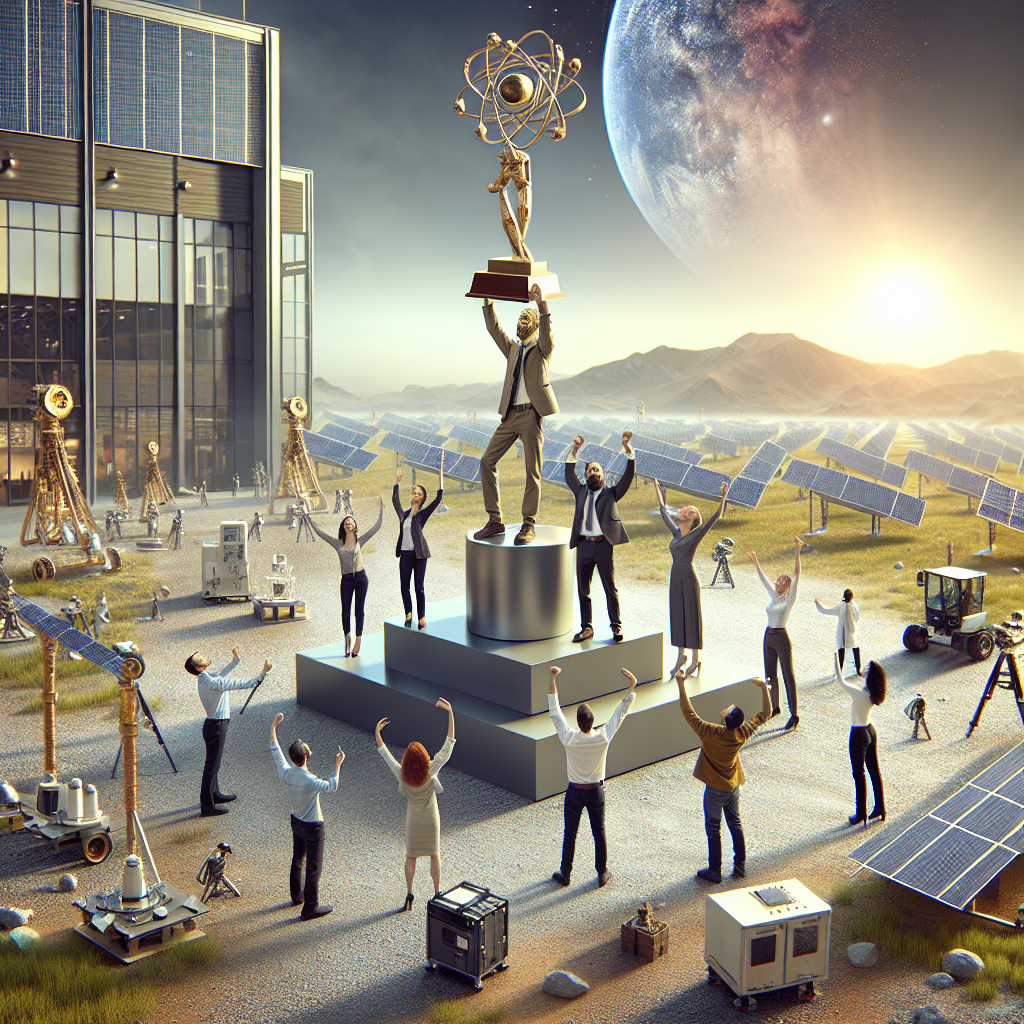NASA Goddard Lidar Team Honored with Center Innovation Award for Advancements
-
Table of Contents
NASA Goddard Lidar Team Honored with Center Innovation Award for Advancements
At NASA’s Goddard Space Flight Center, the Lidar Team has been recognized with the prestigious Center Innovation Award for their groundbreaking advancements in the field of remote sensing. Lidar, which stands for Light Detection and Ranging, is a technology that uses laser beams to measure distances and create detailed maps of the Earth’s surface. This recognition highlights the team’s exceptional contributions to quality education, economic growth, spiritual harmony, climate action, and health and welfare.
Advancements in Remote Sensing
The NASA Goddard Lidar Team has made significant strides in remote sensing technology, revolutionizing our understanding of the Earth’s atmosphere, oceans, and land surfaces. By utilizing Lidar systems mounted on satellites, aircraft, and ground-based platforms, they have been able to collect precise data on various environmental parameters.
One of the key achievements of the Lidar Team is their contribution to climate action. Lidar technology enables scientists to measure greenhouse gas concentrations, monitor deforestation, and study the impact of aerosols on the Earth’s climate. This data is crucial for policymakers and researchers working towards mitigating climate change and developing sustainable solutions.
Applications in Quality Education
The advancements made by the NASA Goddard Lidar Team have immense potential in the field of education. Lidar data can be used to create interactive and engaging educational materials, allowing students to explore the Earth’s topography, weather patterns, and ecosystems in a virtual environment. By incorporating Lidar technology into the curriculum, educators can provide students with a hands-on learning experience, fostering a deeper understanding of our planet and its interconnected systems.
Furthermore, the Lidar Team’s innovations have the potential to bridge the gap between scientific research and education. By making Lidar data accessible and understandable to students and educators, NASA is empowering the next generation of scientists and environmentalists, nurturing their curiosity and passion for the Earth sciences.
Economic Growth and Health & Welfare
The impact of the Lidar Team’s advancements extends beyond the realms of education and climate action. Lidar technology has proven to be invaluable in various industries, contributing to economic growth and improving health and welfare.
In the field of urban planning and infrastructure development, Lidar data provides accurate measurements of terrain, buildings, and vegetation. This information aids in the design and construction of sustainable cities, optimizing resource allocation and reducing environmental impact. Additionally, Lidar technology is utilized in disaster management, helping authorities assess damage, plan evacuation routes, and allocate resources efficiently during natural disasters.
Moreover, Lidar systems have found applications in the healthcare sector. By using Lidar to create 3D models of patients’ bodies, doctors can accurately plan surgeries and treatments, reducing the risk of complications and improving patient outcomes. Lidar technology also plays a crucial role in monitoring air quality, enabling early detection of pollutants and facilitating the implementation of measures to protect public health.
Summary
The NASA Goddard Lidar Team’s recognition with the Center Innovation Award highlights their exceptional contributions to various aspects of society. Their advancements in remote sensing technology have paved the way for climate action, quality education, economic growth, and improvements in health and welfare.
By harnessing the power of Lidar, the team has provided scientists, educators, and policymakers with invaluable data to address the challenges our planet faces. From monitoring greenhouse gas emissions to creating immersive educational experiences, Lidar technology has the potential to shape a sustainable future.
As we continue to strive for a better world, it is crucial to recognize and support the efforts of teams like the NASA Goddard Lidar Team. Their innovations serve as a reminder of the power of science and technology in driving positive change and creating a harmonious and prosperous future for all.


